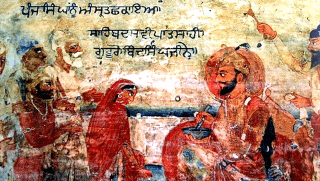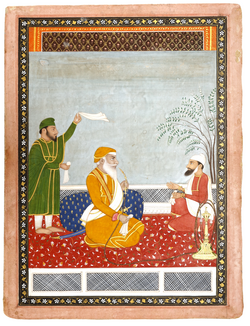BHAI RUPA, village 18 km north of Rampura Phul (30° 16`N, 75° 14`E) in Bathinda district of the Punjab, celebrates the name of a prominent Sikh, Bhai Rupa(Rup Chand, 1614-1709), who laid the foundation of it in 1631 at the instance of Guru Hargobind. Next to Bhai Rupa`s house was built a gurdwara in Guru Hargobind`s honour. The present Gurdwara Sahib Patshahi Chhevin, a two storeyed domed building, marks that site inside the village. Guru ka Langar is across a narrow lane. In the same direction is the pavilion raised recently to accommodate larger divans.
chand
Explore the deeper meaning of Aarti in Hinduism and Sikhism, where true worship goes beyond rituals and embraces the beauty of nature and truth.
Explore the profound concept of Aatma and its connection to Paramaatma, God, and the transcendental self in Sikh and Hindu philosophies.
Explore the distinctive and largely unknown Sikh architectural style, with its rich history in gurdwaras, forts, and palaces, by S.S. Bhatti.
Explore Akal Bunga, the iconic site housing the Akal Takht in Amritsar, a symbol of Sikh religious authority. Learn its role and history here.
Explore the profound concept of Aatma and its connection to Paramaatma, God, and the transcendental self in Sikh and Hindu philosophies.
Explore the deeper meaning of Aarti in Hinduism and Sikhism, where true worship goes beyond rituals and embraces the beauty of nature and truth.
Explore the profound concept of Aatma and its connection to Paramaatma, God, and the transcendental self in Sikh and Hindu philosophies.
Explore the deeper meaning of Aarti in Hinduism and Sikhism, where true worship goes beyond rituals and embraces the beauty of nature and truth.








